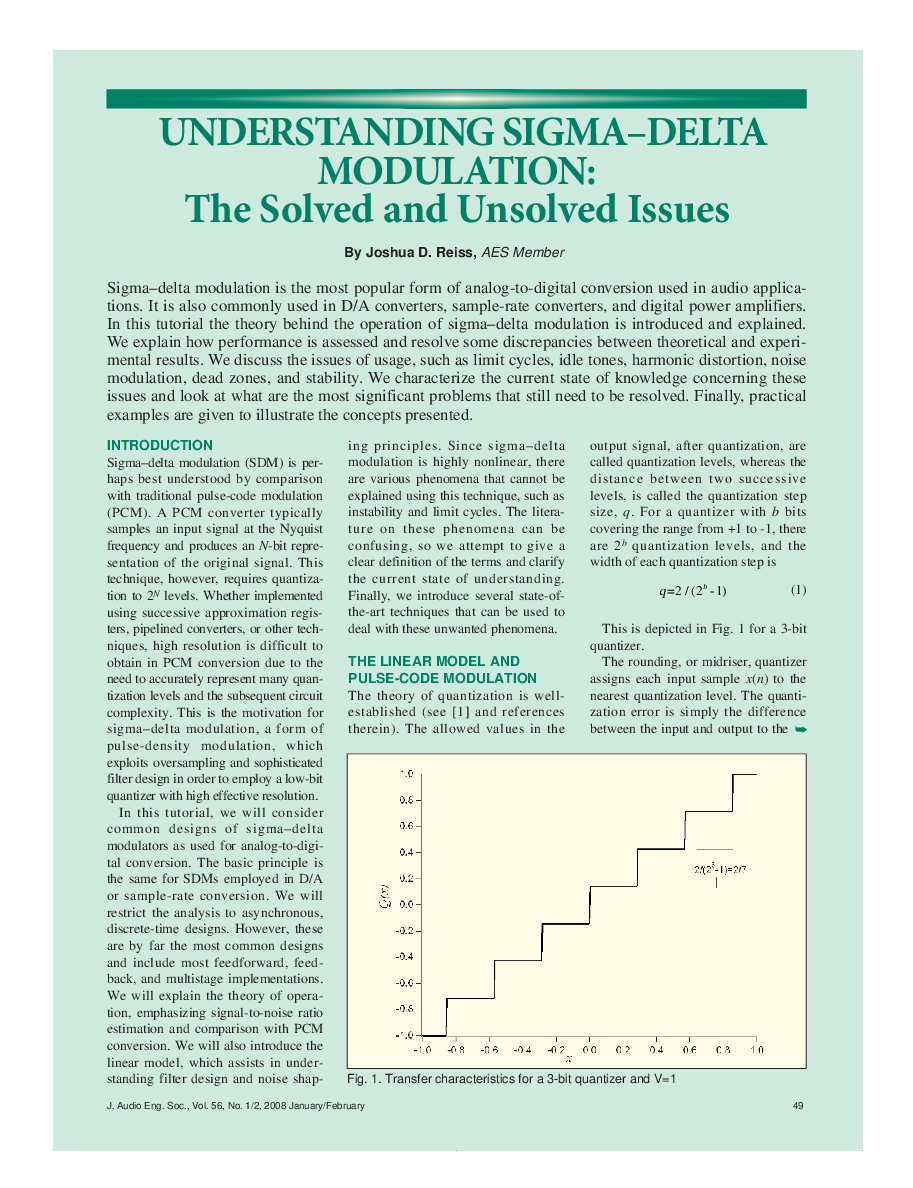Home / Publications / E-library page
You are currently logged in as an
Institutional Subscriber.
If you would like to logout,
please click on the button below.
Home / Publications / E-library page
Only AES members and Institutional Journal Subscribers can download
[Feature] Sigma–delta modulation is the most popular form of analog-to-digital conversion used in audio applications. It is also commonly used in D/A converters, sample-rate converters, and digital power amplifiers. In this tutorial the theory behind the operation of sigma–delta modulation is introduced and explained. We explain how performance is assessed and resolve some discrepancies between theoretical and experimental results. We discuss the issues of usage, such as limit cycles, idle tones, harmonic distortion, noise modulation, dead zones, and stability. We characterize the current state of knowledge concerning these issues and look at what are the most significant problems that still need to be resolved. Finally, practical examples are given to illustrate the concepts presented.
Author (s): Reiss, Joshua D.
Affiliation:
(See document for exact affiliation information.)
Publication Date:
2008-01-06
Import into BibTeX
Permalink: https://aes2.org/publications/elibrary-page/?id=14375
(1653KB)
Click to purchase paper as a non-member or login as an AES member. If your company or school subscribes to the E-Library then switch to the institutional version. If you are not an AES member Join the AES. If you need to check your member status, login to the Member Portal.

Reiss, Joshua D.; 2008; Understanding Sigma-Delta Modulation: The Solved and Unsolved Issues [PDF]; ; Paper ; Available from: https://aes2.org/publications/elibrary-page/?id=14375
Reiss, Joshua D.; Understanding Sigma-Delta Modulation: The Solved and Unsolved Issues [PDF]; ; Paper ; 2008 Available: https://aes2.org/publications/elibrary-page/?id=14375